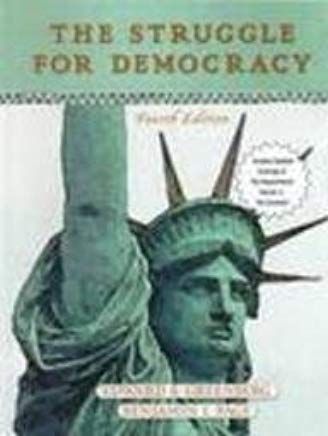The Struggle For Democracy

Fourth Edition
Genre
- Curriculum
Subject
- Democracy
- Political Science / General
- Political Science / Government / General
- Political Science / Political Ideologies / Democracy
- United States
Plot
The text’s critical thinking approach to politics, its features, and its narrative are designed to teach students to look closely, question logically, and think critically about the American Political process. A unique analytical framework presented in the first chapter illustrates the interactions between underlying structural factors—the economy, society, cultural values, etc.–and our political system. This framework offers a holistic view of our system. A “democratic ideal” is carefully outlined in the first chapter, giving students a “yardstick” with which to measure aspects of our system–our congress, our elections, our policies, and evaluate how democratic they are. “Using the Democracy Standard” boxes offer a proposition on an engaging aspect of our system, related to our relative democratic state. Students can then actively evaluate how democratic our system is by reading the pro/con arguments for the proposition and exploring the critical thinking questions. “Using the Framework” boxes help students see how the framework outlined in the first chapter can be used to answer questions about why things work as they do in our system. Each box poses a provocative question about American Government action–from the failure of Social Security reform to the invasion of Iraq in 2003–and then uses the analytic framework to show the underlying link among structural factors, political linkages, government, and government action. “By the Numbers” boxes enable students to grapple effectively with the numerical information–statistics or poll numbers–that is pressed upon U.S. citizens everyday. This feature–now included in each chapter–equips students to be good, critical consumers of numbers, and by extension, better, more informed citizens. “Mapping American Politics” boxes–now included in each chapter–use weighted m
Personal
| Read | |
|---|---|
| Quantity | 1 |
| Index | 8570 |
| Added Date | Sep 16, 2019 18:54:38 |
| Modified Date | Sep 16, 2019 18:54:38 |


 English
English  Nederlands
Nederlands  Deutsch
Deutsch  Français
Français  Español
Español  Magyar
Magyar  српски
српски  Dansk
Dansk  Italiano
Italiano  Svenska
Svenska  Slovenčina
Slovenčina  Português
Português 
